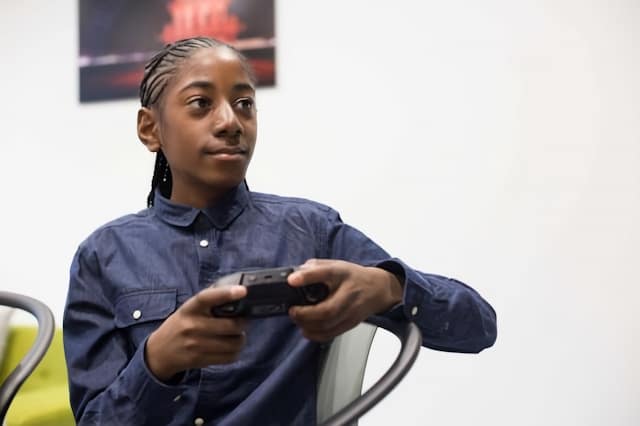
What are the key considerations for designing realistic character animations in action games?
Designing realistic character animations for action games is a sophisticated endeavor that blends art, science, and a deep understanding of gaming mechanics. For animators and designers, the challenge lies in creating characters that not only look good but also move and react in ways that are true to life. This article addresses the key considerations in achieving these goals.
The Importance of Realism in Character Design
When you play an action game, the motion of the characters is one of the most engaging aspects of the experience. Realistic animation can make the difference between a game that feels immersive and one that feels jarring or artificial. For animators, this means capturing the subtle nuances of human movement and expression.
Sujet a lire : What are the benefits of using real-time analytics to optimize in-game economies?
In action games, the characters often perform complex actions such as fighting, running, and jumping. Each of these actions must be depicted in a manner that is both believable and engaging to the players. For instance, when a character swings a sword, the arc of the swing, the recoil of the body, and the impact on the opponent all need to be precisely animated to maintain immersion.
Moreover, the design of the character itself plays a crucial role. The shape, size, and agility of a character can influence how they move and fight. This is why animators must work closely with character designers to ensure that every element, from facial expressions to body mechanics, is coherent and realistic.
Avez-vous vu cela : What are the best practices for integrating social media features into gaming apps?
Techniques for Capturing Realistic Motion
One of the most effective techniques for capturing realistic motion is motion capture. This involves recording the movements of real actors and translating them into digital form. By doing so, animators can obtain precise data on how joints move, muscles contract, and weight shifts.
Motion capture, however, is just the starting point. Animators must refine this data to fit the specific character and context of the game. For example, a game featuring a superhero will require exaggerated, more dynamic movements, whereas a historical knight might have more grounded, deliberate motions.
Another technique is keyframe animation, where animators manually create each frame of the animation. This method allows for greater creative control and is often used to add stylistic elements that motion capture cannot capture. For example, in a fantasy game, animators might add an extra flair to a character's leap or attack.
In addition, understanding the principles of physics and biomechanics is essential. Animators need to consider how gravity, momentum, and force affect a character's movements. This ensures that actions appear natural and convincing. For instance, a character jumping off a ledge should show a realistic anticipation before the jump, an arc during the leap, and an appropriate landing impact.
The Role of Technology in Animation
Advances in technology have significantly impacted how animations are created and implemented in games. Modern game engines like Unreal Engine and Unity offer powerful tools for animators. These engines allow for the real-time rendering of complex animations, making it easier to see how a character's movements will look in the actual game environment.
Physics engines embedded within these platforms simulate realistic interactions between characters and their environments. For example, a character's clothing might flutter in the wind or react to their movements, adding an extra layer of realism.
Artificial intelligence (AI) also plays a crucial role. AI can make non-player characters (NPCs) behave in ways that feel natural and responsive. For example, NPCs might react to the player’s actions, navigate around obstacles, or engage in combat with a level of sophistication that enhances the overall gameplay experience.
Moreover, modern software tools offer features like inverse kinematics, which help in creating more natural joint movements. Animators can easily manipulate a character’s limbs and see how the corresponding joints and muscles should move, reducing the need for manual adjustments.
Additionally, technology aids in the fine-tuning process. Animators can use high frame rates to ensure smooth transitions between different animations, like going from a run to a jump. This is crucial for maintaining the fluidity of motion and avoiding any unnatural stuttering or lag.
Storytelling Through Animation
In action games, animations do more than just show movement; they tell a story. Each character has a background, personality, and set of motivations that are expressed through their movements and actions. For animators, understanding these elements is key to creating animations that resonate with players.
For instance, a seasoned warrior might have deliberate, powerful movements that reflect their experience and strength. Conversely, a novice fighter might show hesitation and less fluidity in their actions. These nuances help players connect with characters on a deeper level.
Furthermore, emotional states should be conveyed through animations. A character that is frightened might have quick, jittery movements, while one that is confident will move with purpose and ease. Facial expressions, body language, and even subtle gestures all contribute to storytelling.
Animations also play a crucial role in pacing the narrative. During intense action sequences, quick, dynamic movements can create a sense of urgency and excitement. Slower, more deliberate movements can be used in moments of tension or reflection, helping to build suspense and emotional depth.
By carefully considering these storytelling elements, animators can create animations that not only look realistic but also enhance the narrative and emotional experiences for players.
Collaboration Between Teams
Creating realistic character animations is a collaborative effort that involves multiple teams. Animators, character designers, game developers, and even writers need to work closely to ensure that every aspect of the character is cohesive and consistent.
For instance, character designers provide the visual blueprint that animators use to bring the character to life. They decide on the proportions, facial features, and overall aesthetic that will influence the animation style. Animators then take this design and focus on how the character moves and reacts.
Game developers, on the other hand, integrate these animations into the game. They make sure that the animations work seamlessly within the game’s mechanics and environment. For example, they ensure that a character’s movements are synchronized with the game’s physics engine and that transitions between different actions are smooth.
Writers contribute by developing the character’s backstory, personality, and motivations. This information helps animators understand why a character moves or reacts in a certain way, adding depth and authenticity to the animations.
Effective communication and coordination between these teams are essential. Regular meetings, shared feedback, and collaborative tools can help ensure that everyone is on the same page and working towards a common vision.
Designing realistic character animations in action games is a multifaceted process that requires a blend of artistic skill, technical knowledge, and collaborative effort. By focusing on capturing realistic motion, leveraging advanced technology, storytelling through animation, and fostering collaboration between teams, animators can create characters that move convincingly and resonate emotionally with players. This not only enhances the immersive experience but also elevates the overall quality of the game.
